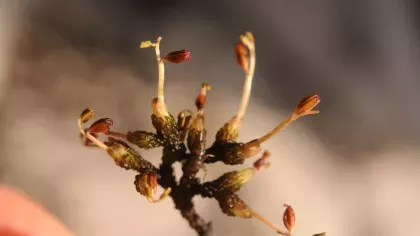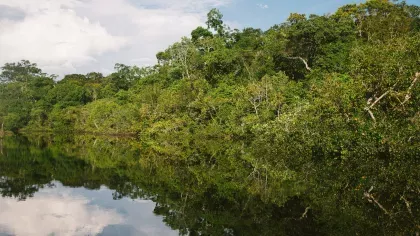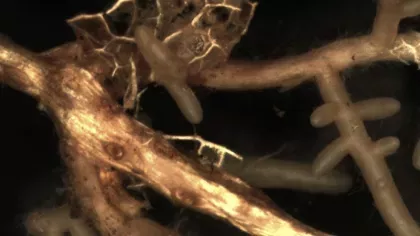28 June 2020
Amazonian fungi: The ‘dark matter’ of biodiversity

A new study published this week used DNA sequences in soil to estimate the biodiversity of different regions across the Amazonian rainforest.
The team of scientists from Brazil, the UK, Sweden, Germany and Estonia found that a teaspoon of soil contained an incredible 400 putative species of fungi.
The extreme diversity of the Amazon has been recognised for centuries, attracting the attention of naturalists such as Alfred Russel Wallace, co-founder of the Theory of Evolution.
However, their work has been hampered by the sheer amount of species in the region, most of which have not yet been scientifically identified and named.
This means that most studies on Amazonian biodiversity have focused on plants, mammals and birds – neglecting the real ‘bulk’ of diversity including fungi, which is sometimes referred to as the ‘dark matter’ of biodiversity.
Professor Alexandre Antonelli, Director of Science at Kew and co-leader of the project said:
"When we started this project in 2015 everyone said it’d impossible to assess differences in biodiversity without being able to name species. But we hoped that by comparing how much genetic diversity that we would find in soil samples, we’d be able to quantify that. We were astonished by the results."
The scientists calculated numbers of ‘molecular taxonomic units’ across hundreds of soil samples, which are defined by differing by at least 2% of their DNA and broadly equate ‘traditional’ species.
Members of the team have been applying similar techniques to study the diversity of plant litter, insects, litter and micro-organisms, showing that their biodiversity patterns often differ from what is known for larger organisms.
Dr. Camila Ritter, currently a post-doctoral fellow at the University of Duisburg-Essen said:
"Despite being Brazilian, I’ve been amazed at the diversity of ecosystem across the Amazonia, and how much that biodiversity changes across sites. It breaks my heart that we’re losing these precious forests faster than we can study."
Ritter, C.D., Dunthorn, M., Anslan, S., Xavier de Lima, V., Tedersoo, L., Nilsson, R.H. & Antonelli, A. (2020). Advancing biodiversity assessments with environmental DNA: Long‐read technologies help reveal the drivers of Amazonian fungal diversity. Ecology and evolution


